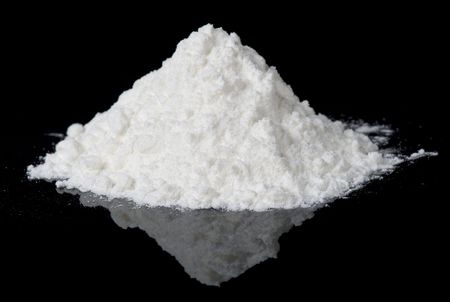What is Cocaine?
Cocaine (crack, snow, flake, and blow) is derived from the coca plant, Erythroxylon coca. It is a central nervous system (CNS) stimulant that has a local anesthetic effect. In the streets, cocaine comes in the form of a powdered hydrochloride salt which is dissolved in water and then injected or snorted. Yet the most critical question that people ask is, “How long does cocaine stay in your system?”
According to the National Survey on Drug Use and Health, in 2009 alone, around 4.8 million young Americans (from age 12 and up) had used cocaine in its various form and that a million had used it at least once before the 2009 survey was made. The 2010 “Monitoring The Future” study revealed that 1.6 percent of the students in the eighth grade, 2.2% in the tenth grade and 2.9% in the twelfth grade had used cocaine in its various forms. In addition, one percent in the 8th grade and 10th grade and 1.4% on the 12th grade had used it at least once.
In the U.S, about 14% of adults have tried cocaine at least once. Statistics show that out of 40 adults at least one has tried it during the past year. The biggest age group for cocaine use is 18-25 among young men. Eight percent of young men in this age group have used cocaine in the last 12 months.
Cocaine can be administered through three different routes: injecting, smoking and snorting (inhaling powdered cocaine through the nose). The duration and intensity of the effects depend on how the drug was administered.

The faster absorption into the bloodstream yields the most intense effect but it has a lesser duration. Snorting the cocaine produces a “high’ that would last for fifteen to thirty minutes while smoking it reduces the duration to about five to 10 minutes. This is why users usually take them in short intervals but with increases in the dosage to prolong the “high” feeling. When the leaves are chewed the affect is reduced pain, fatigue and hunger or thirst.
When inhaled, around 25 – 50 mg of cocaine is absorbed and even after a few seconds, the effects are felt by the user. Sensations such as excitement, increased strength, euphoria and reduced hunger are felt for about an hour followed by a “crash” into depression. To avoid the negative sensation, users consume more of the drug which is likely to eventually lead to cocaine addiction.
How long does cocaine stay in your system?
Cocaine normally stays in the system for approximately 48 hours. Although the method of administration and the dose administered affects how long it takes for the body to metabolize this drug. When coca leaves are chewed, absorption time is around 30 minutes. If the drug is snorted, the peak effects are likely to manifest within the next 20 minutes and are maintained for roughly an hour. Injecting the drug directly to the bloodstream allows the user to feel the full effects within 3.2 minutes. This route is considered to be the one with greatest health threat. Cocaine is estimated to be in the system for around 72 hours since its initial intake.
However, cocaine drug test is designed to detect the metabolite of cocaine, benzylecgonine. When cocaine is metabolized in the body it undergoes hydrolysis. The process of hydrolysis leaves a by-product known as benzoylecgonine. It is that metabolite which is the decisive component that indicates the use of cocaine. This metabolite remains in the system for at least a month following intake.
How long does cocaine stay in your urine?
The length of time cocaine stays in the urine depends on several factors like:
- the potency of the drug,
- the amount taken in,
- the frequency of drug use,
- the general health of the user,
- the age,
- the gender,
- the user’s drug tolerance and
- the user’s metabolic rate.
If a single nasal cocaine dose is snorted, it can be detected inside 4 to 10 hours and around 24 hours subsequent to a single oral dose. Injected cocaine can be detected in the urine even 20 hours or more from use. The cocaine metabolites (benzoylecgonine, ecgonine methyl ester and coca ethylene) are detected until 60 hours from last single use or 22 days after continual use.
If the test result shows a benzoylecgonine to cocaine ratio that is below 100:1, it indicates positive cocaine use within ten hours or less before the urine sample was collected and tested. The accurate dose and exact time of use are not determined by this test procedure.

How long does cocaine stay in your blood?
A single dose of cocaine can be detected in the blood as soon as even after a few minutes from intake to around five to 6 hours later. Benzoylecgonine has a half-life of around 6 to 7 hours. This would mean that this cocaine metabolite is still present in the urine after about 72 hours. But keep in mind the length of detection time is affected by many factors.
Cocaine Testing
The different tests used to determine the presence of cocaine does not really examine the presence of the drug itself but of its marker metabolite, benzoylecgonine. There are several tests used to determine this marker: blood, urine, hair, saliva tests and even sweat patch test.
Urine test for cocaine
This preferred cocaine testing method since this is cheap and could detect recent use of cocaine – within seven days. The client needs only to provide adequate amount of urine sample for testing. The amount of bezoylecgonine, a cocaine metabolite that would produce a positive result would be 300 ng/ml. A follow-up drug test will be required to verify the initial result. A urine sample with 150 ng/ml result confirms positive cocaine use.
Hair test for cocaine
A single dose of cocaine would turn up in the hair sample as early as eight hours or in seven to ten days after use. These metabolites can stay in the strands for a prolonged period of time (90 days) until the hairs are cut. There are times that the hair becomes contaminated with cocaine from the external environment. A good hair wash might remove some external contaminants but not all. Since the test examines the amount of cocaine metabolites inside the hair shaft, those external contaminants have no effect on the result.
A standard hair test that includes GC-MS confirmation requires about 60 mg or more hair (90-120 strands) since the hair has different types (coarse, thin). At least a length of 1.5 inches (3.9cm) of hair that is cut near the scalp is needed for the test.
Blood test for cocaine
Even though this testing procedure is the most invasive and expensive option, it is considered to be the most accurate. A blood sample is drawn from a syringe and sent to the laboratory for analysis. Presence of the marker metabolite could be detected within a few minutes and until around five to six hours from use.
Sweat patch test for cocaine
A recent innovation that could detect the presence of cocaine or its metabolites is by using a patch. The patch is placed on the skin (like a band-aid) and stays there for 14 days. The patch is designed to detect the presence of cocaine through the perspiration. It is usually worn on the upper arms after careful cleansing of the area. After 7 to 10 days, the patch is taken off and sent to the laboratory for analysis using the GC-MS system. There are many factors that can affect the accuracy of this test, thus careful handling is necessary.
False NEGATIVE results of cocaine Tests
There are times when false negative results are received. There are many reasons why this would happen. Too much intake of water and the utilization of detox kits are some of the reasons.
False POSITIVE results of cocaine tests
It has been reported that some drugs like lidocaine and amoxicillin can cause false-positive results in a cocaine test. Aside from that, intake of too much coffee, kidney and liver infection, diabetes and tonic water can alter the results, as well.
Cocaine Effects
Cocaine can interfere with dopamine re-absorption, increasing its serum levels. This neurotransmitter is linked to movement and pleasure. The increased levels of serum dopamine would cause euphoria lasting for around 30 minutes. During this time, the user is hyper-stimulated, mentally alert and not showing any signs of fatigue. Aside from these, users may also have the following effects of cocaine: constriction of blood vessels, elevation of body temperature, tachycardia, pupil dilation and increased blood pressure.
Regular use of cocaine would result to the following outcomes: arrhythmias, myocardial infarction, angina, respiratory failure, seizures, headaches, stroke, nausea and abdominal pain. Due to the suppression of appetite, the chronic user becomes malnourished.
However, each route of cocaine administration will manifest different effects of cocaine.
- Snorting causes chronic runny nose, loss of the sense of smell, hoarseness, difficulty in swallowing and nosebleeds.
- Cocaine ingestion causes reduction of oxygen supply to the intestines which could cause severe gangrenes on the bowels.
- Injection of cocaine could cause severe anaphylaxis or increased risk for HIV or hepatitis.
Cocaine Facts
Here are some facts about cocaine that most people do not know:
- The first Spanish explorers in South America observed that the natives were chewing coca leaves to keep exhaustion at bay.
- Albert Neiman (1860) was able to separate cocaine from these plants and discovered their anesthetic effects.
- Around the 1880’s, Angelo Mariani produced a wine (Vin Mariani) for medicinal purposes that contained 6.5mg cocaine per ounce and 11% alcohol.
- Sigmund Freud, in 1884, proposed the use of cocaine in the treatment of addiction for morphine and alcohol plus other various illnesses – this led to the addiction of his patients to cocaine!
- John Pemberton manufactured Coca Cola in 1884 which contained caffeine and cocaine, however, cocaine was removed from the ingredients in 1906.
- It was in 1914 when the Harrison Narcotic Act was passed and made cocaine illegal.
- Crack cocaine became a salient drug problem when it was introduced in 1985.
- There are two forms of cocaine: crystalline and powder. Crack is the crystal rock that has not been defused by acid.
- To get a kilogram of cocaine, at least five hundred kilos of coca leaves are needed.
- To maximize their profits, the dealers would add lactose, cornstarch, lidocaine, sugar or talcum powder to dilute it and increase the quantity to be sold.
- Over 400,000 newborn babies in the US are addicted to cocaine at the time of their birth.
Cocaine Withdrawal Symptoms
The problem with cocaine is the need to increase the dose over time in order to achieve the matching high and maintain the level of cocaine in system. The constant increase would result to a more severe withdrawal or “crash” and could manifest as:
- Severe depression
- Intense cocaine craving
- Anxiety
- Irritability
- Mood swings
- Paranoia
- Exhaustion
- Insomnia
Withdrawal symptoms can last for months as the brain works to stabilize the dopamine levels and produce the appropriate amounts. Increased appetite as well as weight gain are common and noticeable. As the removal of cocaine in system is gradually completed, the user might spend more time sleeping until the symptoms slowly fade away over time.





This website is very useful. I have found many websites where I read how long does cocaine stay in your system but I was unsatisfied with their information and rehab. Now I found the best article thank you for your useful information as my husband is addicted to cocaine so really want to change his life